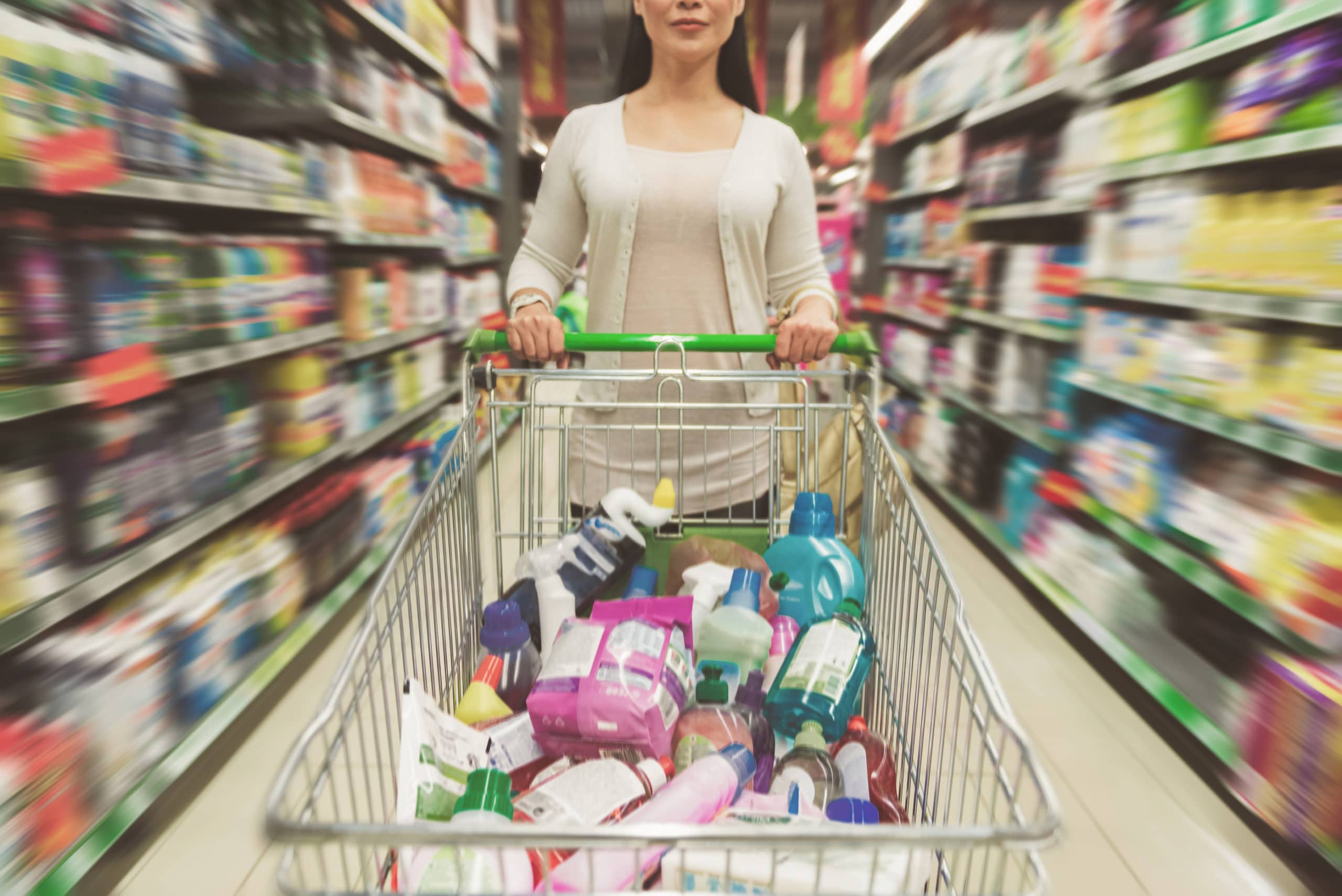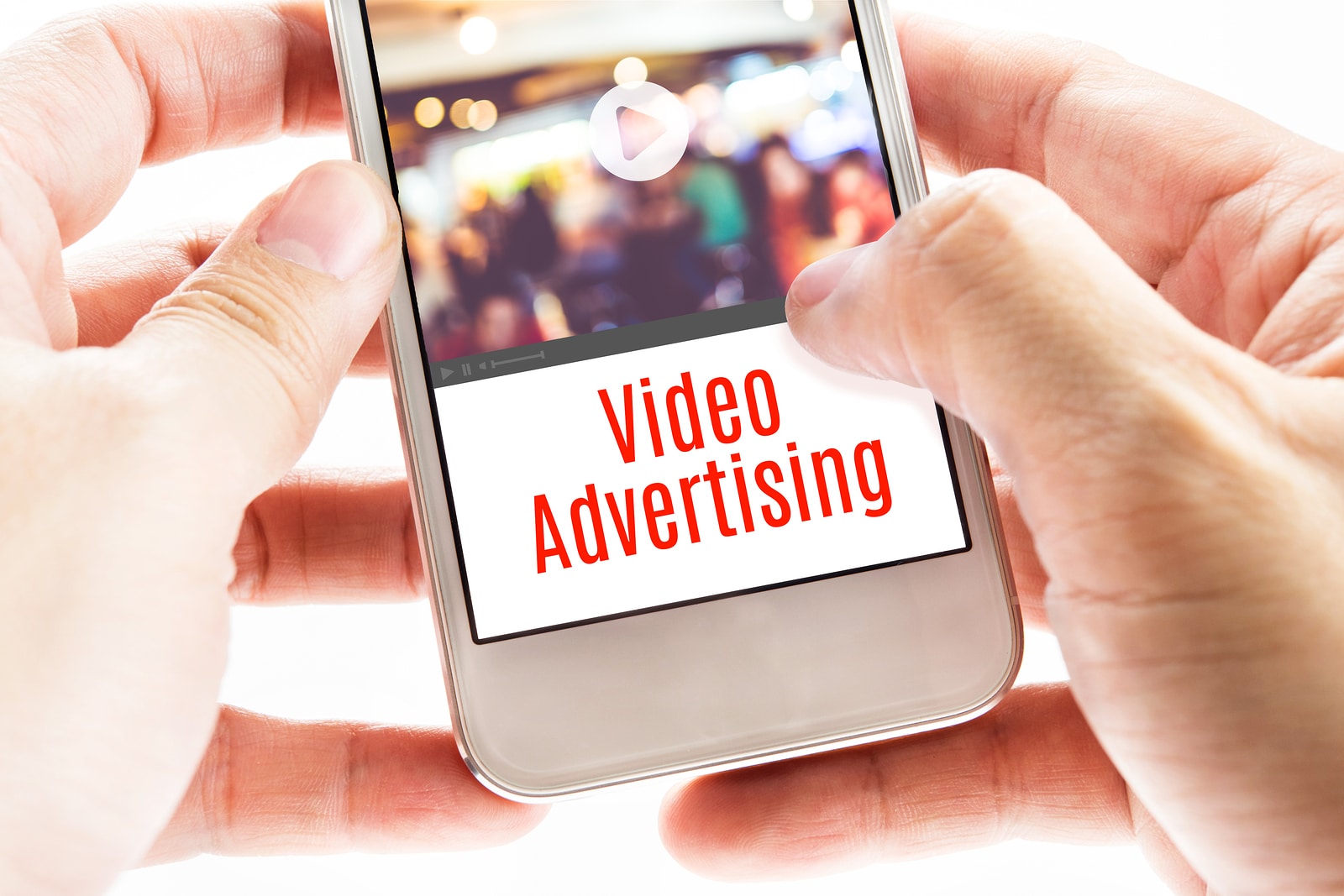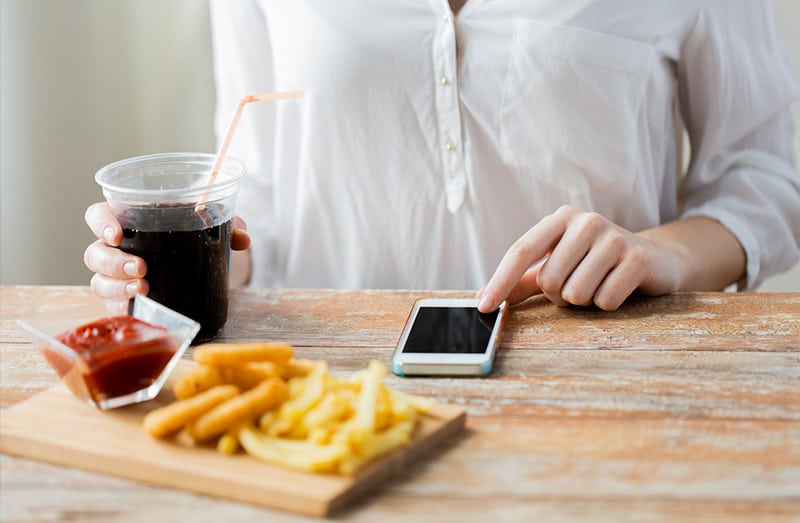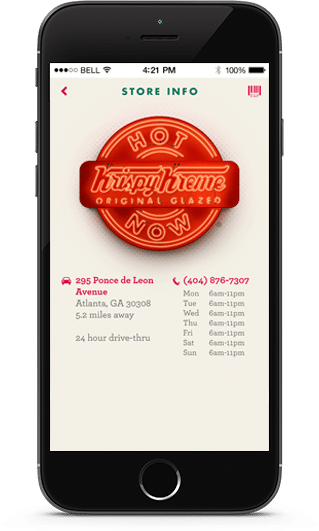Often, the strategies for video advertising monetization are discussed not by content producers, but by the publishers who make money off those advertisements. Continue reading “CPG video advertising monetization in the age of the mobile app”
Category: b2b
Mobile app advertising: Best practices to generate high ROI
If you’re going to gain the attention of today’s consumer, you need to move fast. Continue reading “Mobile app advertising: Best practices to generate high ROI”
The 2018 fast food consumer trends the QSR industry must prepare for
Mobile commerce trends every marketing professional must know
Mobile commerce is rapidly becoming the go-to platform for people who want to shop online. Continue reading “Mobile commerce trends every marketing professional must know”
[Infographic]: Seasonal Shopping Trends 2017
They say the best predictor of future behavior is past behavior, which is why we have taken a look back at key behaviors our users exhibited during seasonal peaks throughout 2017.
In our latest infographic, we review what Shopkickers were most engaged with during important retail moments throughout the year. As 2018 trends already start to take shape, we look forward to seeing how these holiday trends will continue to grow and shift over time.

To learn more about how Shopkick can help you boost engagement during seasonal peaks, get in touch at partners@shopkick.com.
The fast food industry growth statistics that should shape your advertising strategies
Fast food is a high growth industry. Currently, the US market for fast food is worth about $200 billion and nearly half of all consumers get take out or fast food at least once a week. Continue reading “The fast food industry growth statistics that should shape your advertising strategies”
2018 trends from Shopkick’s CEO
With 2018 officially underway, Shopkick CEO Bill Demas shares some of the most important trends that brands and retailers need to keep top of mind to succeed this year.
- Real-time is key. Being able to track and react to shopper behavior across environments, stores and platforms will be key for sophisticated marketing. Shopkick helps expose otherwise opaque behavioral data, and it’s often what most directly impacts bottom line.
- One source to rule them all. While the world is now rich with data, it’s often piecemeal, and weaving together a complete picture of a brand’s impact, or an individual shopper’s path to purchase is time consuming and muddy. A central source of first-party data will be table stakes for future marketing.
- Fight for the full funnel. Rather than wasting resource divvying spend among initiatives, future marketing will examine holistic metrics vs. an amalgamation of the various parts. As consumers become savvier and channels continue to multiply, it’s the whole of a campaign that matters for ROI vs. any one element.
- The race to the bottom is done…and most brands and retailers lose. Only the giants can compete in this race, and no one else can even begin to approach them. So stop trying. Brands and retailers must compete on different value propositions – of experience, excellence, exclusivity and other elements that don’t dilute brand value.
- Pay for performance will gain prominence. In uncertain times, guaranteed returns will grow increasingly valuable.
- No room for fakes. Brands won’t tolerate fraud, so safe haven media buys are essential.
- New formats will change behaviors. Augmented Reality, incentivized video (already huge in Asia/S. Korea), and shoppable branded content (Pinterest) will change how and where people buy products.
While there are many trends already starting to take shape this year, we believe these are the biggest and most important for brands and retailers. It will behoove marketers to pay attention to each of these and think about what they mean for your business as we move forward into 2018.
Mobile video advertising: Best practices for CPG brands
Video is among the most popular and highly-convertible mediums for mobile advertising. Continue reading “Mobile video advertising: Best practices for CPG brands”
The QSR marketing strategies with the greatest potential ROI
When it comes to QSR marketing strategies, the best potential return on investment can be achieved by reaching consumers at the right moment. Continue reading “The QSR marketing strategies with the greatest potential ROI”
How to create brand awareness—and excitement—for new products
A new product launch is an exciting, but also nerve-inducing, event for any CPG brand. You’ve done market research and held focus groups—and you believe that you have a product that will resonate with consumers. However, even big data can’t guarantee a successful launch. For that, you need a powerful marketing campaign that will excite and engage your target audience.
 Knowing how to generate brand awareness for new products requires, above all, knowing your market. There are virtually millions of CPG products on the shelves for consumers to choose from; a successful launch is increasingly dependent on taking a digital approach in order to break through the noise of a crowded marketplace. And that means leveraging mobile platforms and social media to create buzz.
Knowing how to generate brand awareness for new products requires, above all, knowing your market. There are virtually millions of CPG products on the shelves for consumers to choose from; a successful launch is increasingly dependent on taking a digital approach in order to break through the noise of a crowded marketplace. And that means leveraging mobile platforms and social media to create buzz.
Many brands have been able to proactively gain attention for new products on a national or even global level, and thereby achieve a successful debut. Let’s explore how you can adapt one such brand’s tested strategies to ensure your own product launch sees similar results.
How to Create Brand Awareness and Buzz for New Products and Marketplaces
Whether you’re introducing a new product into an existing market or pushing an established product into an untapped market, the one thing that product needs is buzz. While the word is short, the path to earning it is not. In fact, it’s estimated that only 15% of new products succeed in the CPG industry. Brands that have faced this challenge head-on and launched a breakthrough product typically have this one thing in common: they got consumers engaged.
Let’s consider the case of Milk-Bone’s Brushing Chews. The company identified a common problem, canine dental health, and reached out to partners who could help them solve it. Prior to the product’s launch, the brand worked with several retailers to customize their message based on the demographics of the retailers’ audiences. They also spearheaded a social media campaign focused on pet dental health with the help of veterinary professionals to gain credibility and help to drive interest. In one year, sales for the product topped $50 million.
The brand successfully created brand awareness for a new product launch by:
- Solving a universal problem: Pet parents rarely brush their pet’s teeth as it’s a challenge both for the owner and the pet. Milk-Bone saw this dilemma and capitalized on it to launch a new product that turned a task into a reward.
- Building a social media campaign: The company used a series of online videos featuring their mascots Ted and Rudy, a man and his beloved dog. The videos featured an engaging duo demonstrating the product; viewers were excited to share and comment on it.
- Creating mutually beneficial partnerships: Veterinarians were the first to raise concerns about the lack of dental care for pets, so Milk-Bone decided to work with them to get the word out about their toothbrush-esque product. Milk-Bone was able to get the support of these industry leaders while veterinarians received a solution to a problem they saw every day.
Through these marketing efforts, Milk-Bone was able to roll out a new CPG product launch that was one of the most successful in the sector in 2014. They gained popularity and sales for their product by focusing on the common needs of their target audience.
Adapting Milk-Bone’s Strategy to Create a Successful Product Launch
It should be noted that Milk-Bone was up against some tough competition. Their competitors’ products, however, tended to be marketed as medicinal, rather than as treats. Milk-Bone created a niche presence for themselves and leveraged partnerships with trusted industry professionals to spread a powerful message.
Regardless of the product your company is selling, you can adapt some of their strategies to improve your own launch and build brand awareness:
- Bend categories: Milk-Bone is a company that primarily provides dog treats. However, with the rollout of their brushing chews, they moved into the health category. As they were the most dog-friendly option in the health category, they became a go-to option for many pet owners. Launching a product is often easier when you’re the stand out among a fixed group of competitors. Find your product’s unique selling point and use it to compete in a less aggressive category.
- Leverage social media: Milk-Bone rolled out their new product on several platforms, including social media. Their online videos, in particular, resonated with pet owners. Video advertising can generate a high ROI and can be a great tool for building buzz and engagement among consumers before your product even hits the retail shelves.
- Create partnerships: You don’t necessarily have to work with industry experts to carve out a place for yourself in a crowded market, you just need to find a partner that consumers already trust. Shopping apps are a great tool for CPG companies as they help spread your brand’s message to a wider and active audience and help you build the buzz you need for a successful product launch. They allow you to travel with the consumer through the ever-increasing shopping aisle, providing more powerful opportunities for in-the-moment messaging.
By taking a unique slant with your product and marketing it through digital avenues, you can gain more attention and brand awareness for your next product launch. Partnerships, like the ones you build with shopping rewards apps, can also help get the word out about your product to gain consumer’s interest. These apps can give you access to a new audience of consumers who are already engaged—and ready to help create buzz for your next product.
Shopkick is a popular shopping reward apps with partners and consumers alike. Our partners have found success in reaching new audiences and launching new products. To learn more, contact our team today.
Image courtesy Olivier Le Moal
The 3 new CPG marketing trends that brands must know
CPG marketing is in the midst of a paradigm shift. In the past, many CPG brands focused on partnering with retailers to gain market share, rather than reaching out to consumers directly. However, as web and mobile-based options like online ordering have increased, so has a divide between CPG brands and retailers that many did not believe would ever exist.
CPG brands must be prepared to reach out to consumers more directly than they have in the past, and they must be willing to do so in new markets. The top three trends in CPG marketing reveal that consumers are becoming increasingly savvy and demanding a higher level of attention from brands.
 Today’s CPG industry trends are less about the products themselves, and more about the end user experience. And many revolve around digital marketing. You must take a consumer-focused approach and shift your marketing perspective from selling your product to a faceless audience to reaching out to your consumers on a more personal level. The top three new trends of CPG brand marketing all have a common theme: engage, engage, engage.
Today’s CPG industry trends are less about the products themselves, and more about the end user experience. And many revolve around digital marketing. You must take a consumer-focused approach and shift your marketing perspective from selling your product to a faceless audience to reaching out to your consumers on a more personal level. The top three new trends of CPG brand marketing all have a common theme: engage, engage, engage.
CPG Marketing Trend #1: Pre-Enter Emerging Markets
You must stay ahead of your product. That means that when preparing to roll out your brand in a new market like India, China, or other high-growth regions, you need to start advertising it before you release your product line on retail shelves.
CPG mega-brand Procter & Gamble is one such company that’s putting a heavy focus on this strategy. When the brand wanted to gain attention for its products in China, they partnered with producers of several popular reality shows in the region. Their products were shown being used by reality stars before those products even hit store shelves. This approach helped China become the fifth most valuable country for the company, as consumers were excited for the products before their launch and purchased them the first chance they got upon their official introduction to the market.
When preparing to roll out your brand in a new market like India, China, or other high-growth regions, start advertising it before you release your product line on retail shelves.
By previewing their products on popular shows, P&G was able to enter a market already eager to sample their products. When they launched their line, consumers were excitedly waiting to buy. Other brands can follow their lead by beginning their advertising efforts for new products or markets well before launch dates to increase the attention they’ll get when finally released.
CPG Marketing Trend #2: User Generated Content
Approximately 84% of millennials admit that they don’t trust advertising claims. What they do trust are the reviews of other users; 70% of consumers will consider a recommendation from another user over direct advertising from brands. This is why user-generated content, even when anonymous, is so valuable.
Here are a few examples of effective user-generated content:
- Pictures featuring a product: An example of this would be someone showing off unique nail art on Instagram, and then sharing the specific brand of nail polish they used.
- Recommendations on forums: This type of recommendation would happen, for example, on a new mother’s forum when a user recommends a specific brand of ointment for helping relieve diaper rash naturally and effectively.
- Outright product reviews: When a consumer chooses to leave a product review on Amazon or other retailer’s website.
- Hashtags featuring brand names: When a user gives a positive review or shout-out on social media by including a brand’s hashtag to help garner them attention.
As you can see, user-generated content doesn’t have to be on a large scale. The key is to encourage these user interactions. Host contests that require the use of your products, repost positive reviews from consumers, and, above all, thank consumers for their participation. Any opportunity to help consumers find and use your product is one that should not be missed by CPG brands in the era of digital marketing.
CPG Marketing Trend #3: Mobile-Assisted Shopping
The internet has changed the way that consumers shop—even when they’re shopping in a brick and mortar location. These days, consumers want to be able to do everything with their smartphones, from writing a grocery list to collecting coupons to earning rewards points. Several advances in technology have driven this trend, including:
- In-store beacons: Beacons can send messages to mobile devices with a compatible app to notify consumers of products, deals, and special events in the store. These beacons essentially act as GPS devices, helping consumers navigate their way through the sea of products from aisle to aisle.
- Digital rewards programs: Instead of saving up points via punch cards or mail-in offers, consumers are now demanding the ability to track their rewards points and loyalty program information via their phone number or email addresses. This convenience has sharply increased the number of users who participate in these programs.
- Search engines: Consumers only used to research high-expense items before a purchase. Now, 70% of consumers report researching even low-cost grocery products via mobile devices while in-store. Mobile search engines allow these consumers to get an at-a-glance opinion of your product while they’re on-the-go.
- Shopping apps: Shopping apps combine these technologies. They can be used in-store, provide rewards points that consumers can save and access on their smartphone, and even allow shoppers to share their opinion of a product with other users of the app.
Consumers are becoming savvier about where they spend their money, both online and in-store. As such, your brand needs to focus on creating a deeper connection with its target market. Technology can help you reach out to them while they’re attentively browsing the aisles. Mobile is poised to become one of the most significant purchase drivers for the CPG industry, which is why it should be a major focus of your future marketing efforts.
Mobile is poised to become one of the most significant purchase drivers for
the CPG industry
A third-party shopping app is often a cost-effective solution for leveraging mobile while minimizing the impact on your marketing budget. These apps allow you to reach new audiences and encourage them to engage with your brand. If you’re looking for a way to incorporate the top CPG trends into your marketing mix, partnering with a third-party shopping app can be the ideal solution.
Shopkick’s proprietary shopping app can help you connect with your target market in the store and out. For information on becoming one of our partners, contact our team today.
Image courtesy YakobchukOlena
Fast food advertising budgets: How your QSR brand can compete for less
Fast food is one of the most highly advertised consumer-facing markets in the world. Recent figures indicate that $4.6 billion is spent on fast food advertising annually in the US alone. The reasons behind why this segment advertises so heavily are high competition coupled with a limited window of opportunity. Consumers make fast food decisions in the moments right before they buy, which means that all the advertising in the world isn’t going to reach them if it’s done at the wrong time. A fast food advertising budget, then, can be stretched when you focus not on the quantity of your advertisements, but on the timing instead.
 While the high degree of competition is a challenge for quick service restaurants (QSRs), they also have a unique opportunity: they can leverage mobile technology to easily target their consumers when they’re most likely to stop at a fast food franchise. This is something accomplished through mobile moments, as smartphones that travel with consumers are the best way to reach out to them while they are on-the-go. Instead of sinking a high percentage of your precious advertising dollars into a widespread, scattershot campaign, you can instead market smarter by traveling with the consumer.
While the high degree of competition is a challenge for quick service restaurants (QSRs), they also have a unique opportunity: they can leverage mobile technology to easily target their consumers when they’re most likely to stop at a fast food franchise. This is something accomplished through mobile moments, as smartphones that travel with consumers are the best way to reach out to them while they are on-the-go. Instead of sinking a high percentage of your precious advertising dollars into a widespread, scattershot campaign, you can instead market smarter by traveling with the consumer.
Use Your Fast Food Advertising Budget to Focus on Mobile
App-based advertising is capable of reaching consumers as they’re near a QSR location or looking for a place to eat. This can be a better alternative to social media for many fast food companies as this form of advertising reaches consumers when they’re in a buying state of mind.
Domino’s is a brand that has fully embraced app-based advertising. In 2010, they became early adopters of the technology and began focusing heavily on mobile advertising via apps. By 2015, the brand saw a 19% increase in sales and reported more than half of their orders were made via mobile devices. For 25 consecutive quarters, the brand saw increases in sales. Domino’s did this by essentially going all in on digital with their fast food advertising budget. Specifically, the company:
- Offered mobile orders, payments, and tracking: Consumers can use the mobile device for all stages of the ordering process, from beginning to end. There’s even an optional tracker that allows consumers to see when they can expect their food to be delivered.
- Integrated its rewards system: Domino’s has fully integrated their QSR rewards program into their app, meaning users are automatically credited with points.
- Personalized the experience: On the tracker, consumers can see the name of the person making their food, what time the driver left the store, and can even leave a message for the location.
- Target upsell opportunities: When using the Domino’s app, several options will be suggested to the consumer prior to check-out based on their order history, such as desserts, drinks, or sides.
Domino’s essentially took a mobile-first approach to their advertising budget. It was a risky move, but it worked to their benefit. Of course, it was costly upfront, as developing a proprietary app for a QSR mobile advertising strategy can be quite expensive. For brands that are looking for a way to integrate mobile app marketing while limiting their initial costs, an alternative can be found in partnering with a third-party shopping app.
Budget Saving Advertising Alternatives to In-House App Development
When your fast food advertising budget is limited, an ideal way to take a mobile-first approach is to work with a third-party app that is well established. Shopping apps, specifically, are good tools to make the most of your advertising dollars while minimizing the direct cost to your budget.
When considering a third-party app partnership, look for apps that offer:
- A high number of active users: One of the benefits of using a third-party app is that you don’t have to worry about driving adoption. The app should come with a built-in audience of active and engaged users within your target audience.
- Proximity marketing: Proximity marketing allows you to communicate with a mobile user when they’re close to one of your locations. This strategy can determine signals of purchase intent and use them effectively, increasing the chance of reaching that consumer as they’re about to make a dining decision.
- A rewards-based system: The best shopping apps won’t be dependent on offering deals or coupons to get consumers to buy your product. Instead, they’ll offer rewards, such as points for making a purchase. This incentivizes buyers without forcing you to discount your items.
Partnering with an established shopping app can allow you to take advantage of all of the benefits of mobile advertising without the high expense of developing an app in-house. This can be a good way to stretch your fast food advertising budget while increasing your ROI.
A high-performing mobile campaign can be a powerful converter for QSRs, especially when you consider how important it is to be able to travel with your consumers. Consumers make fast food decisions quickly, which means you must also be mobile in order to reach them at that pivotal moment.
Shopkick helps our partners leverage mobile technology to reach an engaged target audience. If you’re interested in learning how far your advertising budget can go when partnering with a third-party app, contact our team today to learn more.
Image courtesy Baramee






![[Infographic]: Seasonal Shopping Trends 2017](https://www.shopkick.com/wp-content/uploads/2017/08/alcohol-advertising.jpg)



